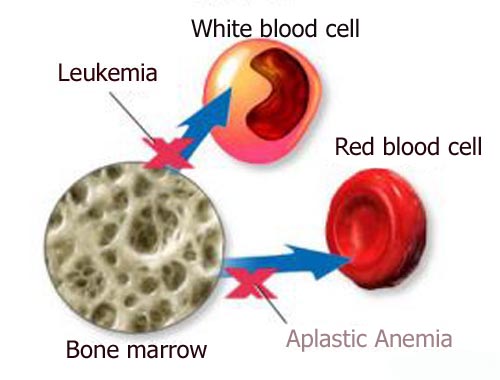Aplastic Anemia
Aplastic anemia is a rare disease, caused by a decrease in the number of all types of blood cells produced by the bone marrow. Normally, the bone marrow produces a sufficient number of new red blood cells (RBCs), white blood cells (WBCs), and platelets for normal body function. Each type of cell enters the blood stream, circulates, and then dies within a certain time frame. For example, the normal lifespan of RBCs is about 120 days. If the bone marrow is not able to produce enough blood cells to replace those that die, a number of symptoms, including those due to anemia, may result. Symptoms of aplastic anemia can appear abruptly or can develop more slowly. Some general symptoms that are common to different types of anemia may appear first and are due to the decrease in number of RBCs. These include: feeling of tiredness, fatigue; lack of energy. Some additional signs and symptoms that occur with aplastic anemia include those due to decreased platelets: prolonged bleeding; frequent nosebleeds; bleeding gums; easy bruising. and due to a low WBC count: increased number and severity of infections. Causes of aplastic anemia usually have to do with damage to the stem cells in the bone marrow that are responsible for blood cell production. Some factors that may be involved with bone marrow damage and that can lead to aplastic anemia include: exposure to toxic substances such as arsenic, benzene or pesticides; cancer therapy (radiation or chemotherapy); autoimmune disorders such as lupus or rheumatoid arthritis; viral infections such as hepatitis, EBV, HIV, CMV, or parvovirus B19. Rarely, aplastic anemia is due to an inherited (genetic) disorder such as Fanconi anemia.
